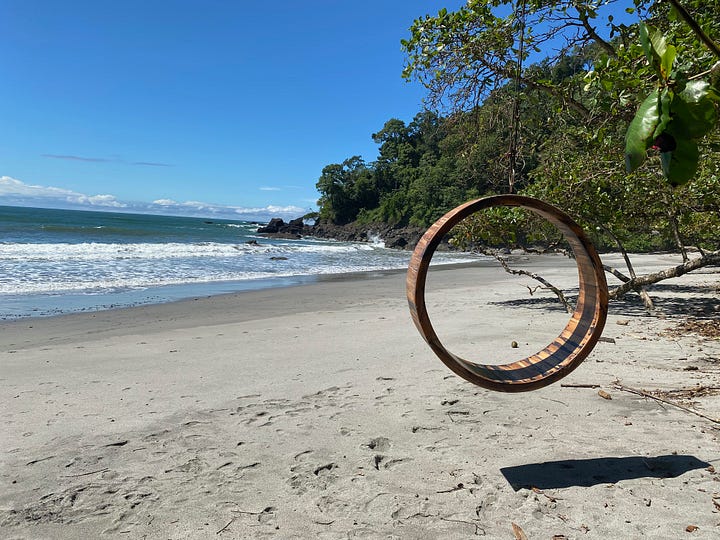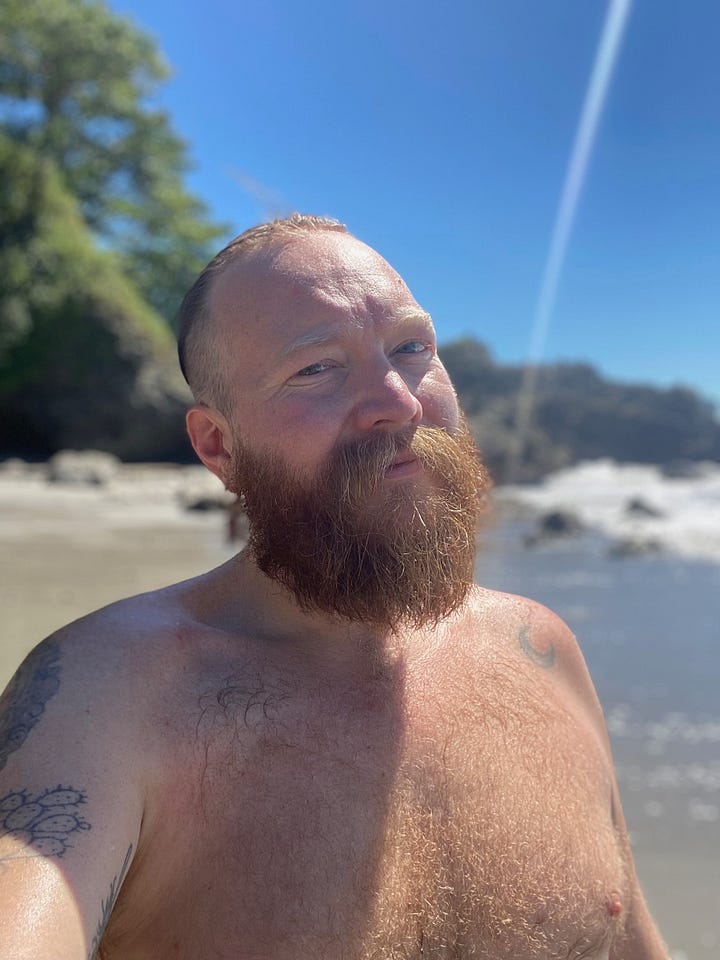Located just a two to four-hour drive (depending on the traffic) from the country’s gay capital of San Jose, this beach town has been known as an international LGBTQ+ hot spot in Central America since the 1990s. Although a deeply Catholic country, Gay marriage has been legal in Costa Rica since 2020, and the “Pura Vida” lifestyle of the country is easily transferred to its relaxed atmosphere when it comes to queer life. Traveling to the region via bus is easy, and it’s advisable if you don’t like heavy traffic on two-lane mountainous roads or just want to stay in Manuel Antonio. As you drive from San Jose, you know you’ve reached the beach paradise once you approach the village of Quepos. Popular with those on a budget, the town has more affordable accommodations and humble eateries. Local city buses run every 20 minutes between Quepos and Manuel Antonio. The entire ride takes less than 30 minutes on the bus and 15 minutes by Uber or car. On the winding mountain road between the Manuel Antonio National Park and Quepos, you’ll find upscale international dining options with epic views of the coast, quirky cafes that incorporate the jungle surrounding, and eco-focused hotels that become pricier as you approach Manuel Antonio National Park and the beach.


Beaches:
Although Quepos technically has a beach, it’s within the city’s harbor and is more of a boardwalk. It’s worth visiting for a morning stroll or to catch the sunset, but it’s no comparison to the beaches in Manuel Antonio. Manuel Antonio Beach actually consists of two smaller beaches Playitas and Playa Espadilla. The South side of Playa Espadilla is full of families, places to rent lounge chairs, surf shops, beachside restaurants, and vendors selling anything from rum-filled coconuts to buckets of cold beers. (Pro-tip: There is a small grocery store where you can buy beers and snacks to avoid the high upsell.) The beach also butts up to Manuel Antonio National Park, but you can only enter the park through the main entrance, a 5-minute walk from the main beach. Parking is usually plentiful, but not free. Inside Manuel Antonio NP, the beaches are immaculate and liberated from noisy vendors, but more about the National Park later. How gay is the beach? According to the Gay Lore, in the 1990s and early 2000s, Playitas was a beloved gay beach where cruising and nudity happened openly. Tragically in 2014, a boutique hotel opened on the secluded Playitas beach and the vibe changed rapidly. Now that the beach can be accessed easily from the hotel, a nudity ban has been enforced. What’s left of the cruising culture moved to the North end of Playa Espadilla and only is at night among the bamboo forest once the sunset and the bonfires have subsided. There is, however, a small beach between Playa Espadilla and Playitas that, when the tide is high and you can only reach it by scrambling over the rocks, you’ll likely find local die-hart nudists sunning in the flesh. Alas, not all of the queer beach culture has left Manuel Antonio! Every Sunday, Pride Manuel Antonio is working hard towards keeping queer culture alive with “Flags on the Beach.” The group places an array of LGBTQ+ flags on the north side of Playa Espadilla beach, signifying an informal queer hangout. Play volleyball, BBQ, and mingle with other queers in the sun. Keep the beach queer!
Keep reading with a 7-day free trial
Subscribe to Queerly Beloved Travel to keep reading this post and get 7 days of free access to the full post archives.




